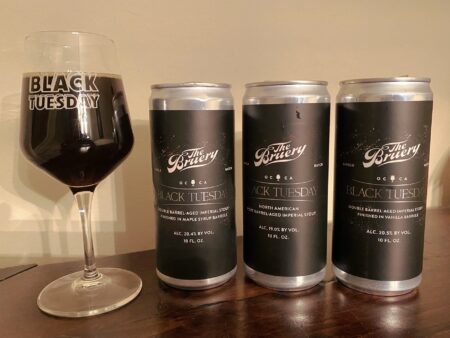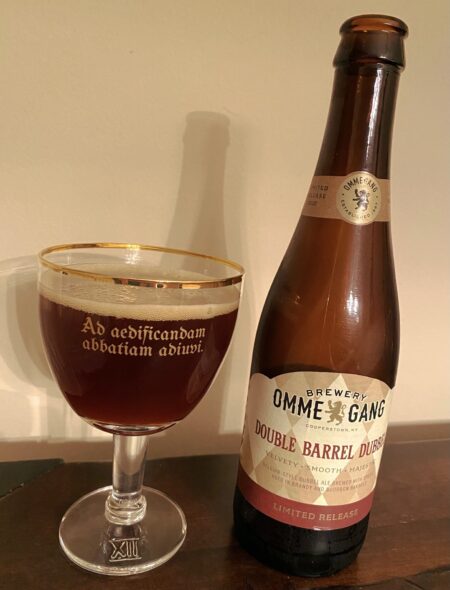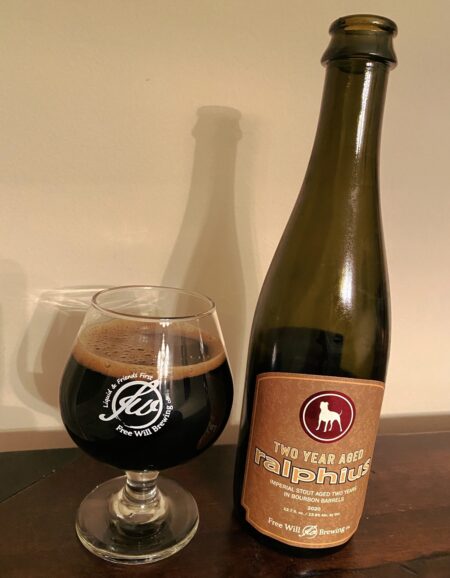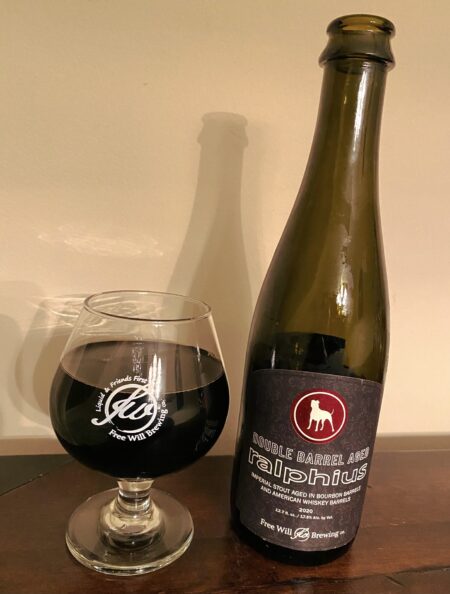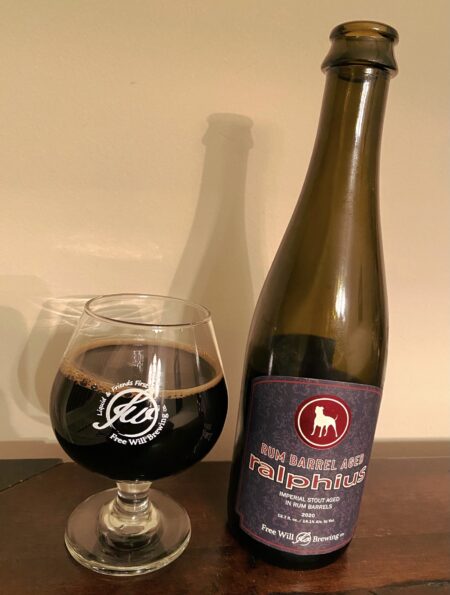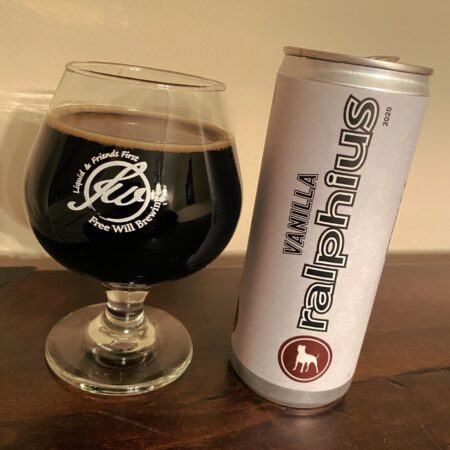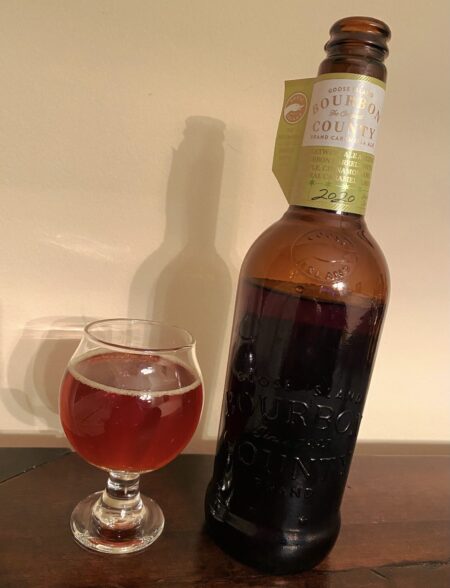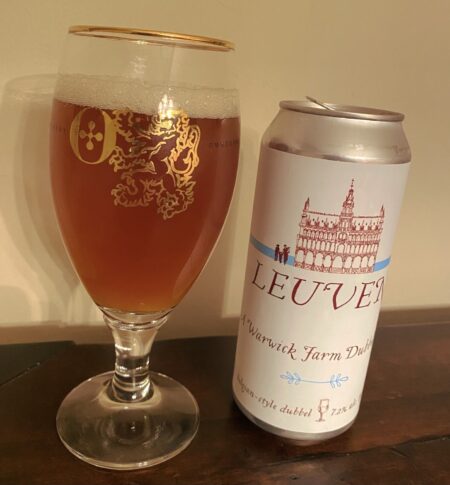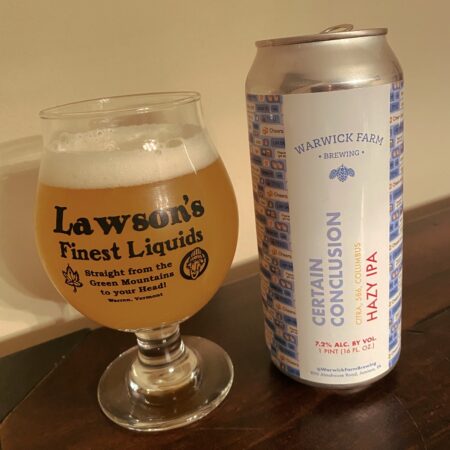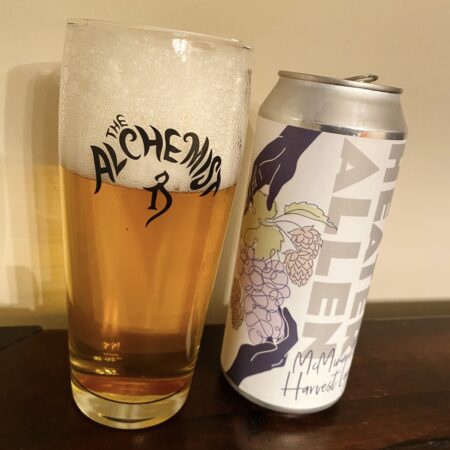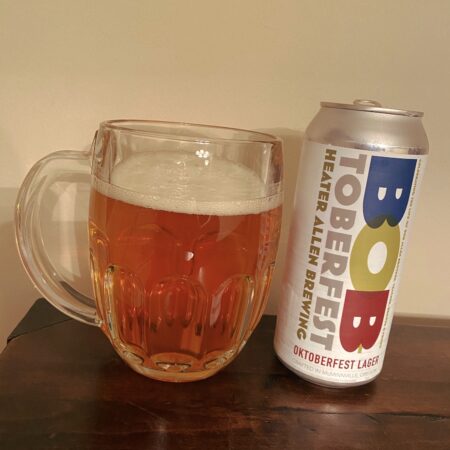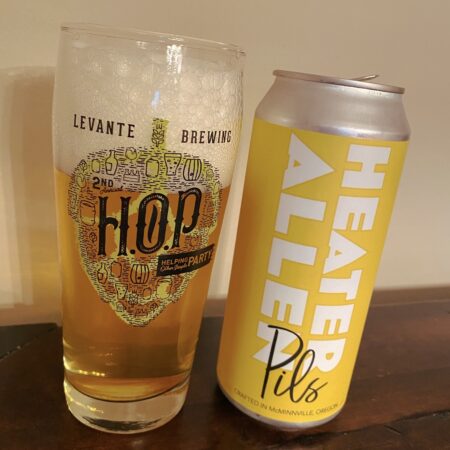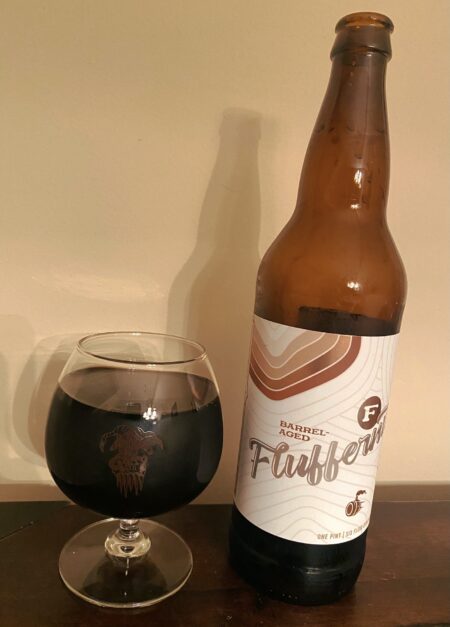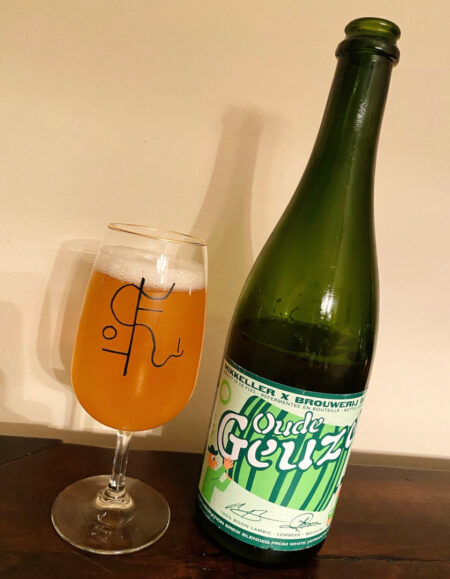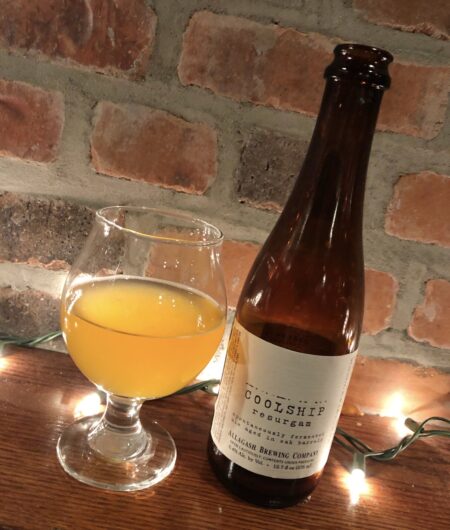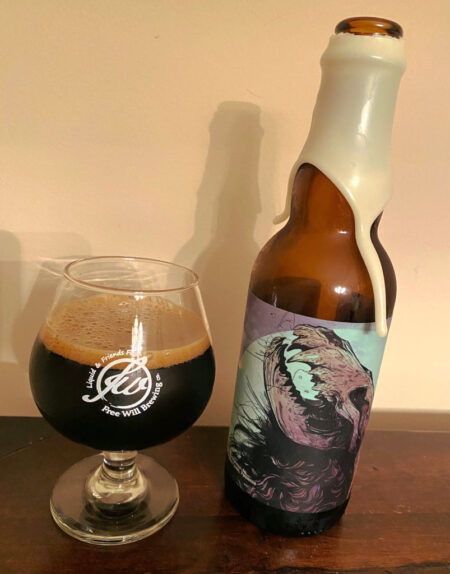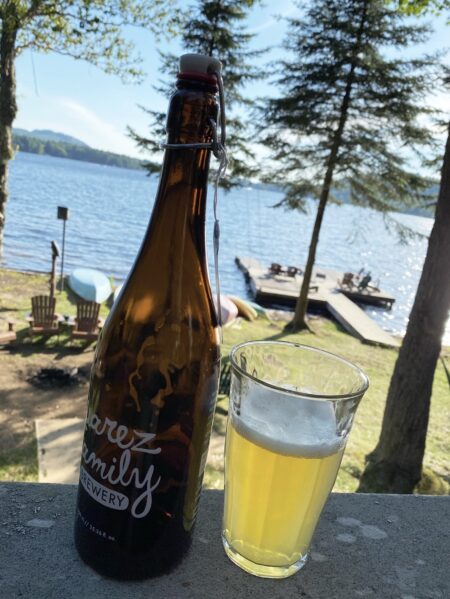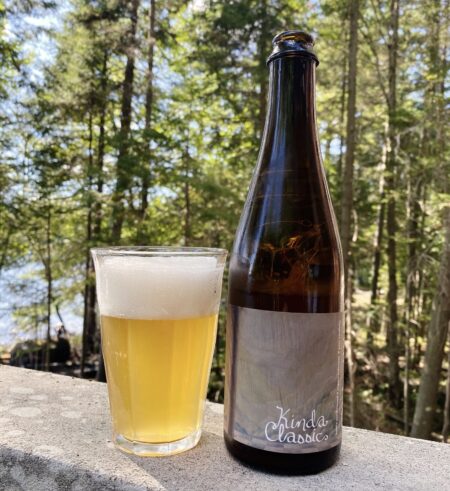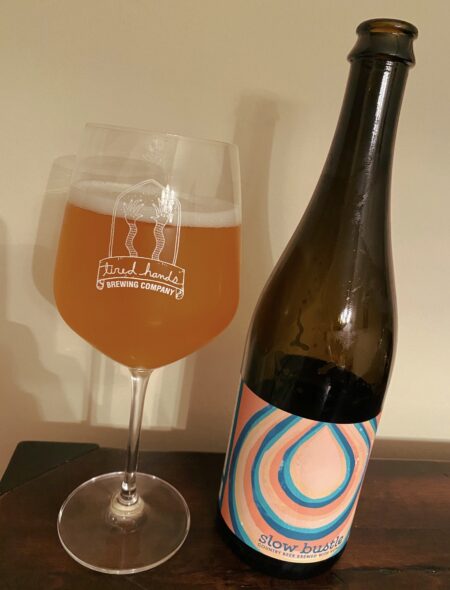I joined the Bruery Reserve Society last year and I have plenty of freakish, disjointed thoughts to share on the experience. And naturally, I’ll cover the plethora of high-octane Bruery beers (and a couple that are perhaps not so much) I’ve drank during the past couple of years. This is going to be a lengthy post, so strap in.
The Societies Themselves
About two years ago, I found myself craving Black Tuesday and The Bruery had just opened a satellite location in Washington D.C. so I took the plunge and joined the Preservation Society. I won’t pretend that driving to D.C. to pick up the beers is convenient, per say, but it’s certainly doable. It makes for a decent enough day trip with about 4 hours in the car.
At this point, I should cover the varying levels of Bruery Societies. As I just mentioned, I started by joining the Preservation Society, which is basically a quarterly membership. You can join for a single quarter, snag the 3-4 included beers (and order whatever society exclusives are available to you) and then quit. That was actually my initial thought – join, grab a bunch of Black Tuesday, and then quit. But I ended up staying on because I was generally enjoying the included beers and access to other stuff.
The other thing to note about the Preservation Society is that the four included beers per quarter are a mix of Bruery strong ales and Terreux sours (usually two of each). In terms of pricing, it’s also quarterly billing at $70 (for 4 included beers), which is actually pretty reasonable for these beers (at a minimum, they’re probably $80 worth of beer, if not more like $100 or more if bought separately). It allows access to society exclusive beers, but not all exclusive beers (i.e. there are beers that are only available for the Reserve or Hoarders societies).
All in all, I had a good experience with it. However, after a year, a few things became clear. First, the quarterly pickup timeline was a tad much for the commute that I was making. Second, while I enjoy Bruery Sours just fine, my favorites tend to be the non-sour barrel aged strong ales.
Enter the Bruery Reserve Society. This is a yearlong membership with at least 12 included beers, but there’s more flexibility in terms of the included beers and pickup timing. I opted to do the Bruery (Non-Wild/Sour) version, but you can do a mix of both or all-sour if you so desire. That’s basically it. It’s marginally more expensive (and billed all at once), but there’s much more flexibility in terms of what’s available and when you pick it up.
There’s another society level called Hoarders, which is like the others, only moreso. Lots more beer and some exclusive releases. I doubt I’ll ever do this, even if I could. The Reserve Society keeps me plenty busy.
Below is an epic recap of over two years worth of Bruery beers. N.B. While a lot of these are massive beers packaged in 750 ml bottles because Patrick Rue is trying to kill us all, I should note that I did manage to share a lot of them. Since the pandemic, this has not been possible in any meaningful way, but I’m hoping that will start to ease over time this year…
Black Tuesday
Black Tuesday remains a staple Bruery offering, and it is great. You’ll be hearing a lot about this beer below, as it’s often a component of a blend, but it’s great by itself and well worth seeking out.
Also of note: the last couple years, they started packaging in 16 ounce cans, which is a welcome development. Look, I can drink a full 750 of BT by myself if I really want to, but I shouldn’t do such things. Even at 16 ounces, it’s a bit of a project to put one down. I feel like the pandemic didn’t help here, and I’ve got the waistline to prove it. It’s a great beer to share though. I miss bottle shares, is what I’m saying.
Anyway, one thing I’ve noticed about this beer is that while it’s big and burly… it’s actually pretty nimble when compared to our current trend of ever-thicker brownie-batter-esque pastry stouts. Boozy for sure, but that doesn’t bother me much. Anyway, there’s a ton of BT variants, so let’s get to them.
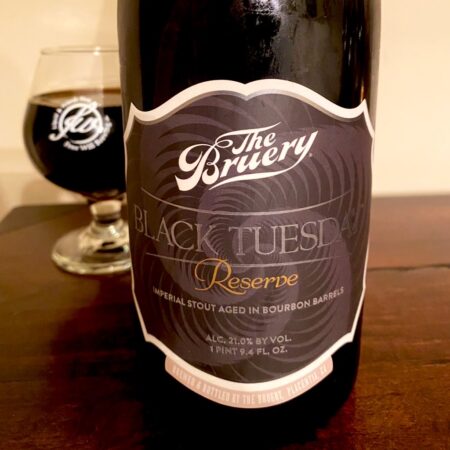
Black Tuesday Reserve (2020) – Brewed in 2018 and aged in bourbon barrels for a year, then transferred to a separate set of bourbon barrels for another year of aging. Holy hell, this is phenomenal. A friend shared a bottle of the 2015 Reserve a while back, and the small taste I had there was also amazing. This is Black Tuesday, only moreso. Richer, deeper, stronger, more complex, an incredible barrel character. It’s massive and boozy and I love it. A candidate for the vaunted A+, but for now we’ll just give it the A
Beer Nerd Details: 21% ABV bottled (750 ml). Drank out of a snifter on 9/18/20. Bottled 02/11/20.
Rum Barrel Aged Black Tuesday – I’ve found that once you get away from the Bourbon/Rye world of barrels, Rum barrels tend to be my favorite. So I was looking forward to this beer, which I drank solo on New Year’s Eve. It’s quite good, and the rum barrel adds a distinct brown sugar note to the proceedings that works well. Is it better than regular BT? Probably not, and this is not the best rum barrel aged beer I’ve had or anything, but I appreciate these non-standard barrel treatments. There does seem to be a high variability to Rum barrels, and these seem on the better side of things. A-
Beer Nerd Details: 20.8% ABV bottled (750 ml). Drank out of a BT glass on 12/31/20. Bottled 10/23/20.
Red Wine Barrel Aged Black Tuesday and 2 Year Red Wine Barrel Aged Black Tuesday – Black Tuesday in Red Wine barrels for one or two years… and I dunno. They’re both good, but the vinous character doesn’t match the base beer as well as bourbon. It’s a nice change of pace and it works in a share, but it can’t quite compete with the other variants. They did put the 2018 version in 375 ml bottles though, which was welcome. The 2020 2 year aged variant is maybe a minor improvement, but still has the same character. B or B+
Beer Nerd Details: 18%-18.5% ABV bottled (375 ml and 750 ml). Drank out of a snifter on 7/5/19 and 3/3/20. Vintage: 2018 and 2020.
Black Tuesday Virtual Box – Double Barrel Aged Imperial Stout Finished in Vanilla Barrels – Aged for three years total (one in bourbon barrels, two in vanilla extract barrels), this is awesome. The vanilla character is prominent but not overpowering or artificial. It’s hard to call anything about this subtle, but the vanilla is just very well integrated into the BT base here and elevates it well above BT. Also of note: every Bruery strong ale should be available in 10 ounce cans, they’re awesome. A
Beer Nerd Details: 20.5% ABV canned (10 ounces). Drank out of a BT glass on 11/22/20. Vintage: 2020.
Black Tuesday Virtual Box – North American Port Barrel Aged Imperial Stout – Another beer aged for three years, this one spent two of those years in North American Port barrels. The result shows that character well, imparting a jammy fruit element to the beer that works really well. It is my least favorite of the Virtual Box releases, but that’s a pretty high bar. It’s certainly interesting and well worth trying. B+ or A-
Beer Nerd Details: 19% ABV canned (10 ounces). Drank out of a BT glass on 11/23/20. Vintage: 2020.
Black Tuesday Virtual Box – Double Barrel Aged Finished in Maple Syrup Barrels – Like the other two releases, this is three years old with the last two spent in maple syrup barrels. The result is sticky sweet with the maple coming through strong, but again, well integrated with the base so as to not overpower anything (the way maple can sometimes do). A-
Beer Nerd Details: 20.4% ABV canned (10 ounces). Drank out of a BT glass on 11/24/20. Vintage: 2020.
Anniversary Beers
Soie – The Bruery Anniversary beers have long been a cornerstone for Kaedrin and they hold a special place in my beery history. The Anniversary ales are named after the traditional wedding anniversary gifts, in this case Silk. This entire series of beers has been one of my favorite things that the Bruery produces and I was always surprised at their availability on shelves. Pricey, but good.
Alas, the last couple releases haven’t been distributed, and this is honestly one of the things that keeps me interested in the Bruery Reserve Society. Soie is as good as ever and I want to say that I like it more than the last few years, but who knows? Regardless, regular ass Anniversary is a favorite and remains so (N.B. – Pretty much the same goes for Acier, which was last year’s Anniversary beer… but I figured this post was long enough!) A
(There was a Hoarder’s Society exclusive called Soie Reserve that got released this year, which has a similar treatment as the BT Reserve mentioned above (i.e. two years, two sets of barrels). This will hopefully be available to regular Reserve Society members this year, because it is 1000% my jam.)
Beer Nerd Details: 17% ABV bottled (750 ml). Drank out of a snifter glass on 8/2/20. Vintage: 2020.
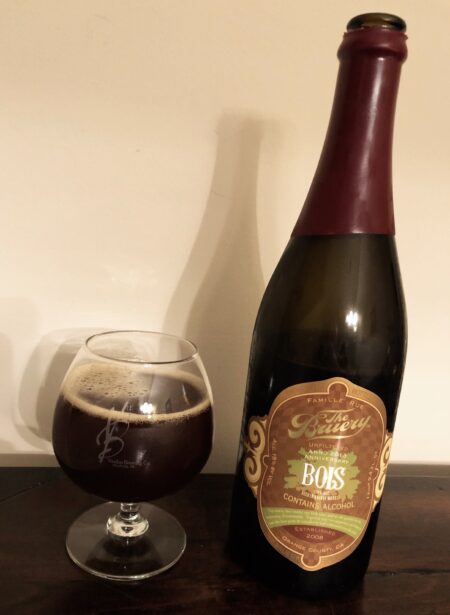
Bois – Brandy Barrel Aged – For a few years, the Bruery conducted a series of barrel-aged variants for the anniversary ales. They seem to have fallen off that bandwagon, but perhaps that will be reinstated in the future. This brandy barrel version is unquestionably my favorite of the barrel variants. The brandy adds a brighter note to the rich caramel and oak from previous solera-ed iterations of the Anniversary. It’s like a perfect blend of bourbon and brandy barrel aged barleywines or something. Really loved this one, and it’s holding up amazingly well for a beer made in 2013. A
Beer Nerd Details: 15% ABV bottled (750 ml). Drank out of a snifter glass on 6/29/19. Bottled: 04/17/13. Vintage: 2013.
Bois – New French Oak Barrel Aged – I appreciate the idea here, and it does kinda let the base beer shine more on its own than a spirits barrel treatment, with a little more candied fruit emerging. I won’t call it my favorite, but it’s a welcome change-up that I’d spring for again. A- or A
Beer Nerd Details: 15% ABV bottled (750 ml). Drank out of a snifter glass on 7/23/20. Vintage: 2013.
Sucré – Rum Barrel Aged – Another barrel variant, and probably my second favorite of such treatments. As mentioned above, I like a good rum barrel treatment, and it fits well with the base old ale here. The sweet treacly molasses matches well with the caramelized dark fruit of the old ale better than stout, perhaps. A
Beer Nerd Details: 17.5% ABV bottled (750 ml). Drank out of a snifter glass on 8/22/20. Vintage: 2014.
Poterie – Scotch Barrel Aged – The most dreaded barrel variant because of the possibility that they’d use a peated Scotch barrel, which has wrecked many a beer. So it’s nice to see that this comports itself very well. Not as good as the other variants or the normal bourbon treatment, but either the solera base cuts it, or they used a non-peaty barrel, because there’s little to no smoke here (it’s been a while though, so I don’t remember much, other than it was much better than feared). Still, not a variant I’ll be seeking out again (though you could do a lot worse). B or B+
Etain – Red Wine Barrel Aged – Red wine barrels might be better suited here than for Black Tuesday… but they’re not better than the other barrel treatments. The vinous note is nice and matches the dark fruit of the base well, but tannins aren’t a great match and the oak isn’t as prominent. Good for a change of pace, but not something I’d seek out again. B or B+
Beer Nerd Details: 14.2% ABV bottled (750 ml). Drank out of a tulip glass on 10/19/19. Vintage: 2018.
Chronology and Assorted Strong Ales
Chronology – Wee Heavy – The Bruery does this thing where they make a beer and age it in barrels, releasing at intervals: 6, 12, 18, and 24 months. It’s a fascinating experiment! Unfortunately, the 750 ml bottles makes it hard to do a side-by-side tasting. Plus, I didn’t try all of these – I did, however, try the 6 month and the 24 month versions, and I have to say that I was pleasantly surprised by the 6 month version, which I think might have been better than 24. But these were months apart and could be due to any number of factors. B+ or A-
Beer Nerd Details: 13.7% (6mo) and 13.4% (24mo) ABV bottled (750 ml). Vintage: 2016/2017.
Chronology:24 – Imperial Porter – I’ve only had the 24 month and I thought it was really good – better than the Wee Heavy, but not my favorite, so I didn’t really branch out to the other entries in this series. B+
Beer Nerd Details: 13.6% ABV bottled (750 ml). Drank out of a tulip glass on 9/15/19. Vintage: 2018.
Chronology – Old Ale – This was the first series they did, and it feels like a sorta amped up version of the Anniversary old ale (which ain’t no slouch, to be sure). I’ve had the 18 and the 24 and was surprised by the distinction between the two, but they’re both pretty great. I feel like the 24 fared better here than with the Wee Heavy. These are all old at this point, but the Old Ales seem to hold up the best for me too. A-
Beer Nerd Details: 16.6% (18mo) and 17% (24 mo) ABV bottled (750 ml). Vintage: 2015/2016
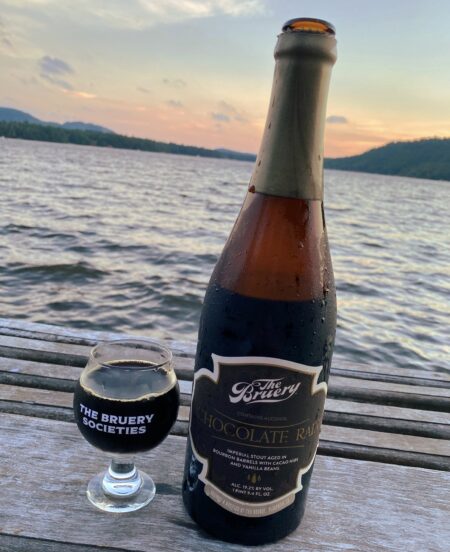
Chocolate Rain – This is Black Tuesday with cacao nibs and vanilla beans added. And yet, it very closely resembles regular Black Tuesday. There’s maybe a bit of extra chocolate/vanilla character, but it’s not a huge difference. I’d have to try them side by side to tell for sure. All that being said, it’s not like Black Tuesday is a bad thing to taste like. It may not be worth the pricing premium, but it’s still great. A-
Beer Nerd Details: 19.2% ABV bottled (750 ml). Drank out of a tulip glass on 7/26/20. Vintage: 2019
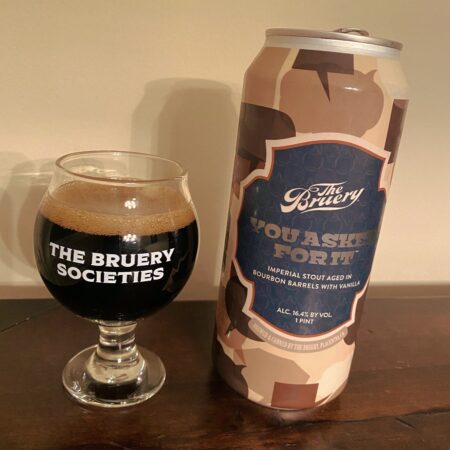
You Asked For It – A blend of Black Tuesday and So Happens It’s Tuesday, conditioned with vanilla. It’s very good, but far from the best vanilla dosed stouts. The vanilla comes through loud and clear, which is nice. Despite blending with the lower-octane SHIT (*ahem*), it comes off as pretty boozy, which isn’t a huge problem in my book. Also of note: available in cans. A-
Beer Nerd Details: 16.4% ABV canned (16 ounces). Drank out of a tulip glass on 7/24/20. Vintage: 2020
Quad Kisses – Belgian Style Quadrupel aged for a “brief” stint in four different barrels (bourbon barrels, rye whiskey barrels, scotch barrels, and rum barrels), then blended back together. Not sure if it’s because of the “brief” aging or the variety of barrels or the base beer, but this doesn’t really come together for me. It’s fine, to be sure, but the barrel character feels muddled (this can happen when you blend too many different types of barrels). B
Beer Nerd Details: 13.1% ABV bottled (750 ml). Drank out of a tulip glass on 7/19/20. Vintage: 2020.
West Wood – Belgian-style quadrupel aged in Woodinville Whiskey barrels (a craft distillery out of Washington State). Rock solid stuff, distinct barrel character matched well with the quad base. Quite enjoyable, and I prefer this sort of thing to the more out-there adjuncts/ingredients. B+
Beer Nerd Details: 14.9% ABV bottled (750 ml). Drank out of a tulip glass on 6/25/19. Vintage: 2019.
American Copper – Belgian style quadrupel aged in Copper & Kings Apple Brandy barrels. Seems similar to the just mentioned West Wood, only this time the barrel character is a little more distinctive, owing to the apple character that comes out. However, the apple flavors don’t overwhelm, they just add complexity (unlike a beer we’ll get to below, which goes a little too far). B+
Beer Nerd Details: 14.7% ABV bottled (750 ml). Drank out of a snifter glass on 12/27/18. Vintage: 2018.
Wether – A blend of barrel-aged and fresh weizenbock. Conceptually, I really like this idea. Weizenbocks are an underrated style and I always appreciate finding an interesting take on one like this. I do feel like this could be better, but it’s been a while, so my memory has faded a bit here. I would be interested on a new take on this beer though. B or B+
Beer Nerd Details: 10.9% ABV bottled (750 ml). Drank out of a tulip glass on 12/16/18. Vintage: 2018.
12 Days of Christmas
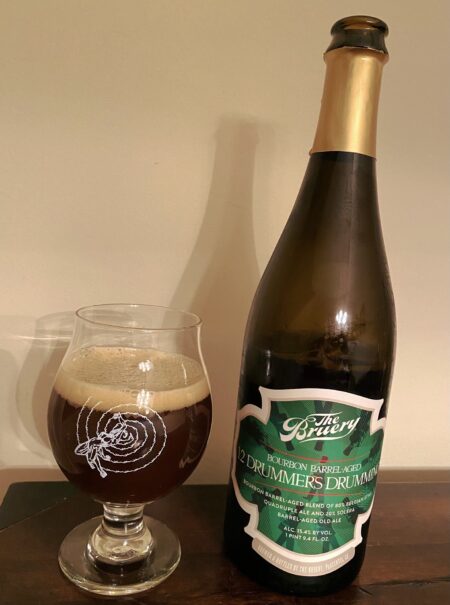
Bourbon Barrel-Aged 12 Drummers Drumming – This started as a blend of 80% quadrupel and 20% solera-aged old ale (presumably the Anniversary beer). That initial blend (released last year) was tasty, but nothing to write home about. But when you put that blend into a bourbon barrel for more aging? That turns out great. I really enjoyed this, and it might be my favorite of all the 12 Days beers (though, to be fair, I have not had all of the BBA versions). A-
Beer Nerd Details: 15.4% ABV bottled (750 ml). Drank out of a tulip glass on 12/5/20. Bottled 10/20/20.
Partridge In A Pear Tree (2020) – Not a precise rebrew of the original PiaPT, but it appears that they’re just restarting the series with new entries every year? This is a pretty standard quadrupel with spices, and it’s very well done. It fits with my sorta back-to-Belgian-style-basics movement. I think it will also be fabulous if given a BBA treatment this year… B+ or A-
Beer Nerd Details: 11.3% ABV bottled (750 ml). Drank out of a tulip glass on 12/4/20. Vintage: 2020
4 Calling Birds (2011) – I actually didn’t get this as part of my society membership; I unearthed it from my cellar after 9 years of aging. And… it was infected. I liked it fresh just fine, but aged was just plain bad. This could very well be due to less than ideal aging conditions, but it may also be the beer itself. I gave it a couple of tastes and let it warm up a bit and it just didn’t get any better, so it was just another exhibit in the ongoing “should I age beer” trial. F
Beer Nerd Details: 11% ABV bottled (750 ml). Drank (what little of it I did) out of a tulip glass on 12/21/20. Vintage: 2011.
Not So Strong Beers
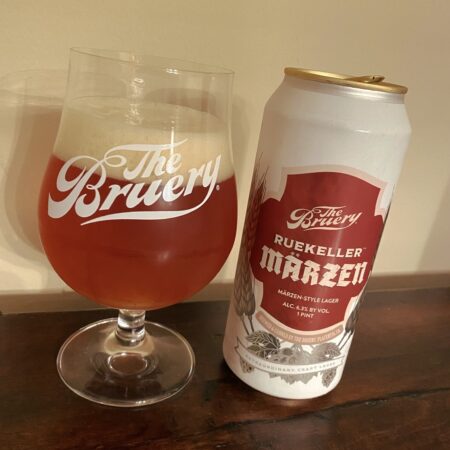
Ruekeller: Märzen – Gasp! The Bruery makes traditional German-style lagers? Yup! They don’t add weird ingredients or anything (made with real lederhosen!)? Nope! This is actually a rock solid take on the style, one of the more enjoyable ones I had this year (and I drank a bunch of different Festbier/Marzens this year). Clean, toasty malt character all the way, very quaffable. A-
Beer Nerd Details: 6.3% ABV canned (16 ounce pounder). Drank out of a tulip glass on 10/10/20.
Loakal Red – An unassuming American Red Ale made with Centennial hops and aged in oak for a short period. I don’t know that the oak comes through particularly strong, but I like a nice, hoppy red ale like this, and it’s quite well done. B+
Beer Nerd Details: 6.9% ABV canned (16 ounce pounder). Drank out of a tulip glass on 6/23/19.
Saisons & Sours
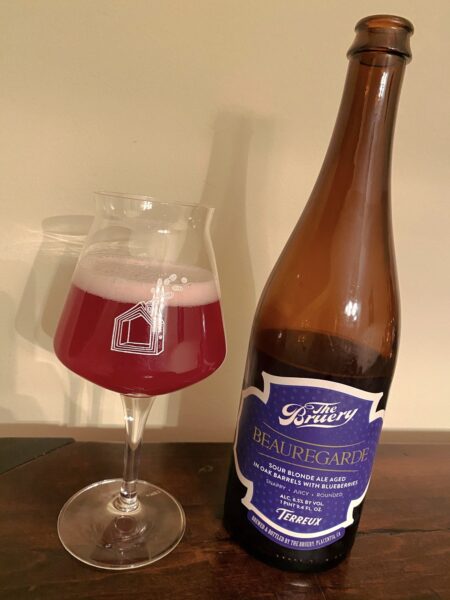
Beauregarde – Sour Blonde Ale aged in Oak Barrels with Blueberries. Blueberries are a tricky fruit with beer, but this might actually be my favorite of the Bruery’s fruited sours. The blueberry character meshes well with the sour blonde base, and there’s no smokey weirdness from the blueberry (this happens sometimes). Tasty stuff, and probably the biggest surprise (I wasn’t expecting to like this as much as I did). A-
Beer Nerd Details: 6.5% ABV bottled (750 ml). Drank out of a teku glass on 12/29/19. Vintage: 2019
LXXV – Inspired by the French 75 cocktail, this collaboration with NOLA brewing is a sour ale made with botanicals, co-fermented with Chardonnay grape juice, and a little lemon zest. It’s fine, I guess? A lot of these Bruery sours tend to feel samey to me and thus they all sorta blend together in my head. B- or B
Beer Nerd Details: 8.2% ABV bottled (750 ml). Drank out of a charente glass on 10/12/19. Vintage: 2019
Train to Beersel – Inspired by Belgian lambics, this is a blend of sour beers aged in French Oak Cabernet Sauvignon and American Oak Sauvignon Blanc barrels. The comparison with lambic perhaps sets an unrealistic frame of reference with this one, which again, feels a lot like a standard Bruery sour blonde (i.e. more tart flavors than earthy funk). It’s certainly well done and I enjoyed it, but I was hoping for something more lambic-ey. B+
Beer Nerd Details: 8.4% ABV bottled (750 ml). Drank out of a flute glass on 9/28/19. Vintage: 2019
Annuel – This was made for the fourth Anniversary of Bruery Terreux (they have a separate brand for sours) and on paper, it sounds like an amped up version of The Wanderer (an excellent beer). It is a blend of oak barrel-aged sour quadrupel ale with what appears to be the Anniversary Old Ale (presumably Acier or Etain, given the timeframe) and wine barrel-aged sour blonde ale. Sounds interesting, but in practice it feels like the components are kinda fighting each other. The high ABV might also have something to do with it. It’s interesting and neat at a share, but not something I’m going to get again. B
Beer Nerd Details: 13.5% ABV bottled (750 ml). Drank out of a snifter glass on 9/4/19. Vintage: 2019
Kisses Betwixt Mr. & Mrs. This Is Ridiculous – A blend of saisons made by the Bruery and Dogfish Head that was then aged in a French Oak foeder for 7 months. It’s good, but there’s just a ton of competition for this type of beer these days (particularly locally, with folks like Tired Hands and Forest & Main consistently putting out bangers in this style). B+
Beer Nerd Details: 7.6% ABV bottled (750 ml). Drank out of a wine glass on 7/18/19. Vintage: 2019
Stream Crossing – A collaboration with Green Cheek Beer Co, it’s another foeder aged saison, and like the beer we just discussed, it’s good, but in a crowded field, it doesn’t really stand out. You get to make fun Ghostbusters references though. B+
Beer Nerd Details: 7.2% ABV bottled (750 ml). Drank out of a wine glass on 4/26/19. Vintage: 2019
Brazo Brazo – American Wild Ale aged in oak barrels with Brazos blackberries. Supposedly Brazos blackberries are larger and more acidic than your typical blackberries, and are thus used more in cooking applications than fresh. It’s tasty and I like blackberries, but I apparently found this a little disappointing. B
Beer Nerd Details: 8.5% ABV bottled (750 ml). Drank out of a wine glass on 3/20/19. Vintage: 2019
Flavored Beers, Weird Ingredients, Adjuncts, &c.
Sundae Sunday – A variant of Black Tuesday aged in a combo of Red Wine and Bourbon barrels with vanilla and boysenberries. I don’t especially love adding fruit to barrel-aged stouts. There might be some exceptions and I don’t mind small pours, but an entire 750 of this wouldn’t work for me (I did mange to share this in a socially distanced/safe way, so I only drank about 1/4 of the bottle, which was perfect. It was better than expected, but the boysenberry just doesn’t do it for me. Curmit (the personification of my Inner Curmudgeon) tends to not like this sort of thing (i.e. wacky ingredients, etc…), so this section of the post will probably feature lots of complaints like this. B or B+
Beer Nerd Details: 17.7% ABV bottled (750 ml). Drank out of a tulip glass on 12/9/20. Vintage: 2020.
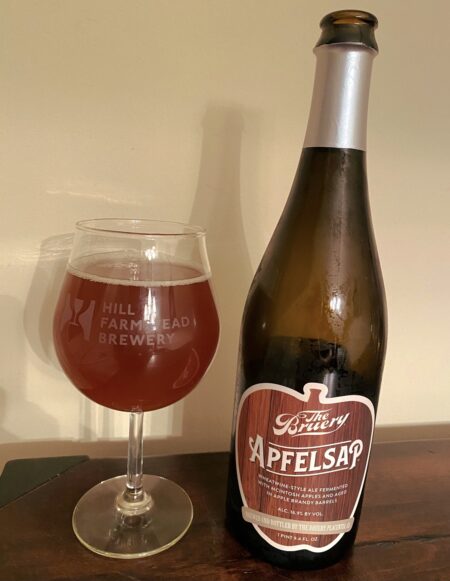
Apfelsap – This is a wheatwine fermented with McIntosh Apples, aged in Apple Brandy barrels. It’s well done, but the apple character is just overwhelming. My prejudice here is against using the adjuncts, as I like what an Apple Brandy barrel can bring to the table all by itself (see: American Copper, mentioned above). It’s also possible that the wheatwine base can’t stand up to the treatment here. This isn’t bad or anything, but it’s just not especially my thing. Curmit strikes again.. B–
Beer Nerd Details: 15.6% ABV bottled (750 ml). Drank out of a charente glass on 11/21/20. Vintage: 2020.
White Chocolate Raspberry – Bourbon barrel aged wheatwine with cacao nibs, vanilla beans, and raspberries added. Once again, the added fruit really wreaks havoc here. It overwhelms the beer, and it kinda clashes too. I like the base beer fine, but it’s not one of my favorites to start with. Adding raspberries doesn’t do much for me and honestly, I felt like it really detracted from it. Curmit is disappoint. C+
Beer Nerd Details: 13.1% ABV bottled (750 ml). Drank out of a tulip glass on 10/8/20. Vintage: 2020.
Pie Happy – Old ale aged in bourbon barrels with apples, vanilla and spices; clearly intended to resemble apple pie. And this one fares a lot better than the last two beers mentioned. Perhaps the base could stand up to the treatment better, or the apple pie character is just more appealing to me. It’s far from the best apple pie beer (Parish Royal Earth comes to mind), but it’s a really solid attempt at one. Curmit is mildly amused. B+
Beer Nerd Details: 16.5% ABV bottled (750 ml). Drank out of a tulip glass on 8/24/20. Vintage: 2020.
Joy Ride – Imperial Stout aged in bourbon barrels with coconut, almonds, cocoa powder, milk sugar, and the ever so comforting “natural flavors”. Basically meant to be a liquid Almond Joy candy bar, and it does a good job evoking that taste. Lots of coconut, chocolate, and almond, very good. Curmit doesn’t love it, but he’s somewhat mollified since we shared most of the bottle and it’s got a nice novelty factor. B+
Beer Nerd Details: 15% ABV bottled (750 ml). Drank out of a tulip glass on 7/25/20. Vintage: 2020.
American Anthem – Imperial Brown Ale aged in bourbon barrels with peach, apricot, cinnamon, and vanilla beans. Another pie-inspired beer, this time peach cobbler. It’s not bad, but not as good as Pie Happy. I’m certainly a big fan of peaches and apricots, but I don’t know that it mixes as well with this sort of thing. B or B+
Beer Nerd Details: 14.2% ABV bottled (750 ml). Drank out of a tulip glass on 10/12/19. Vintage: 2019.
Wee Heavy Coconuts – Bourbon Barrel-Aged Scotch-Style Wee Heavy Ale with toasted coconut, walnut, and cinnamon. It’s nice and while I wouldn’t necessarily put all those ingredients together, they seem to work well enough… but Curmit would probably just prefer the BBA Wee Heavy all by itself (presumably something like the aforementioned Chronology beers). It was a nice beer to share though, and I distinctly remember because we were at a restaurant and we sneaked the waitress a taste (she loved it). B or B+
Beer Nerd Details: 12.5% ABV bottled (750 ml). Drank out of a wine glass on 4/18/19. Vintage: 2019.
Grey Monday – Black Tuesday with hazelnuts added to the barrels as it ages. I’m not the biggest hazelnut fan in the world, but this makes for a neat little variant of BT. Again, Curmit can appreciate it in small doses, but it’s telling that I/he have not sprung for any additional bottles over the intervening year. B+
Beer Nerd Details: 19.2% ABV bottled (750 ml). Drank out of a wine glass on 9/27/19. Vintage: 2019.
Marzipandemonium – A blend of Tuesday stouts with added almond “character” and vanilla. It’s solid stuff, but the almond “character” does come off as a little strong and possibly artificial (hence the scare quotes). Again, fun beer to share, but would never really want to drink a whole bottle. B or B+
Beer Nerd Details: 16.7% ABV bottled (750 ml). Drank out of a snifter glass on 3/6/19. Vintage: 2019.
So there you have it. More than you probably ever wanted to know about Bruery beers. I know they’re not the new hotness anymore and it’s easy to get carried away with these high ABV brews or wacky flavored experiments, but I still love them and have enjoyed this experience. That being said: I probably won’t remain a member beyond this next year. I love these beers, but even having drank all of the above, I’m still building up a backlog of beers that need to be shared… during a pandemic. Still, looking forward to seeing what 2021 brings. And, hopefully, the return of bottle shares.
